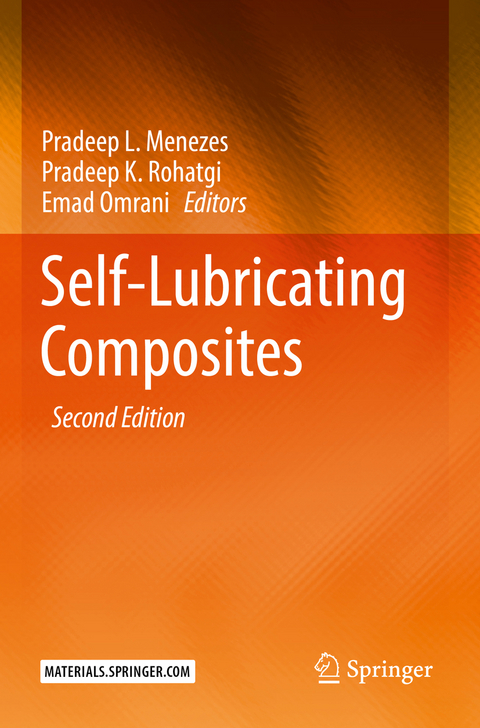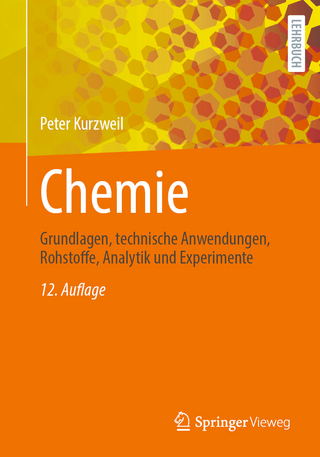
Self-Lubricating Composites
Springer Berlin (Verlag)
978-3-662-64245-0 (ISBN)
In most tribological applications, liquid or grease based lubricants are used to facilitate the relative motion of solid bodies to minimize friction and wear between interacting surfaces. The challenges for liquid lubricants arise in extreme environmental conditions, such as very high or low temperatures, vacuum, radiation, and extreme contact pressure. At these conditions, solid lubricants may be the alternative choice which can help to decrease friction and wear without incorporating liquid lubricants. Challenges with solid lubricants are to maintain a continuous supply of solid lubricants on the contact surfaces to act as lubricous layer between two sliding surfaces. Such a continuous supply is more easily maintained in the case of liquid lubricants when compared to solid lubricants. The most innovative development to ensure a continuous supply of solid lubricant to the contact surface during sliding is to introduce solid lubricant as reinforcement into the matrix of one of the sliding components. Composite materials are engineered or naturally occurring materials which contain two or more distinct constituents with significantly different chemical, physical and mechanical properties. Composites consist of reinforcement and matrix (metal, polymer and ceramics). Among various reinforcements, recent emerging material, solid lubricant, is found to have many favorable attributes such as good lubrication property. Self-lubrication is the ability of a material to provide lubrication to the contact surface to decrease friction and wear rate in the absence of an external lubricant by transferring embedded solid lubricants in the composite to the interface. Self-lubricating composites (SLCs) are an important category of engineering materials that are increasingly replacing a number of conventional materials in the automotive, aerospace, and marine industries due to superior tribological properties. In SLCs, solid lubricant materials, including carbonous materials, molybdenum disulfide (MoS2), and hexagonal boron nitride (h-BN) are embedded into the matrices as reinforcements to manufacture a novel material with attractive self-lubricating properties. Several studies have been investigated the tribological properties of self-lubricating materials. This book fills that gap to have a reference book about self-lubricating materials and their properties to help scientists, engineers, and industries. This book discusses mechanisms of self-lubricating materials, self-lubricating properties and the applications for industries. The chapters will be written by authoritative expertise in the field. Additionally, this book will demonstrate fundamental study and most advanced innovations in self-lubricating materials as regards to friction and wear. The chapters also include tribological properties of composites and coatings and some practical applications of self-lubricating materials.
Pradeep L. Menezes (corresponding author) is an associate professor in the Department of Mechanical Engineering at the University of Nevada, Reno, Nevada. Before joining this university, he worked as an adjunct assistant professor at the University of Wisconsin–Milwaukee (UWM), Wisconsin, and as a research assistant professor at the University of Pittsburgh, Pennsylvania. Dr. Menezes’s productive research career has produced more than 120 peer-reviewed journal publications (citations more than 5000, h-index–34), 30 book chapters, and 4 books related to tribology. Pradeep K. Rohatgi is a UWM Distinguished Professor. He has coedited and coauthored 12 books and more than 400 scientific papers and has 19 US patents. He is considered as a world leader in composites and materials policy for the developing world. He has served on committees of the governments of the USA and India in the areas of materials, especially those related to automotive sector, to promote collaboration. His research includes advanced manufacture of lightweight, energy-absorbing, self-lubricating, and self-healing materials and components, including micro- and nano-composites and syntactic foams. He is the founder chief technology officer (CTO) of Intelligent Composites, LLC, Milwaukee, Wisconsin. Emad Omrani is a process engineer at Intel Corporation. He was a graduate student of Dr. Rohatgi at the UWM. He has coauthored 2 book chapters and over 10 peer-reviewed scientific papers. At UWM, Dr. Menezes collaborated with Dr. Rohatgi and Dr. Omrani in the areas of tribology and self-lubricating materials and published several research papers on the tribology of self-lubricating materials. Dr. Menezes and Dr. Rohatgi are well-known tribologists and self-lubricating materials scientists. These editors are therefore well known and well connected in this field to put forth an excellent book on this topic.
Solid Lubricants: Classification, Properties and Applications.- Tribology of Self-Lubricating Metal Matrix Composites.- In Situ Generated Turbostratic 2D Graphite: A New Way to Obtain High-Performance Self-Lubricating Iron-Based Composites.- Self-Lubricating Polymer Composites: Mechanisms, Properties and Applications.- Tribology of Self-Lubricating Polymer Nanocomposites.- Polymeric Solid Lubricant Transfer Films: Relating Quality to Wear Performance.- Self-lubricating Ceramic Matrix Composites.- Recent Progress in Self-Lubricating Ceramic Composites.- Surface Engineering Design of Alumina-Matrix Composites.- Environmental Analysis of Self-Lubricating Composites: A Review.- Molecular Dynamics Simulation of Friction in Self-Lubricating Materials: An Overview of Theories and Available Models.
| Erscheint lt. Verlag | 5.1.2023 |
|---|---|
| Zusatzinfo | XV, 296 p. 188 illus., 98 illus. in color. |
| Verlagsort | Berlin |
| Sprache | englisch |
| Maße | 155 x 235 mm |
| Gewicht | 475 g |
| Themenwelt | Naturwissenschaften ► Chemie ► Technische Chemie |
| Technik ► Maschinenbau | |
| Schlagworte | composite • Friction • self-lubricating • Tribology • Wear |
| ISBN-10 | 3-662-64245-X / 366264245X |
| ISBN-13 | 978-3-662-64245-0 / 9783662642450 |
| Zustand | Neuware |
| Informationen gemäß Produktsicherheitsverordnung (GPSR) | |
| Haben Sie eine Frage zum Produkt? |
aus dem Bereich


